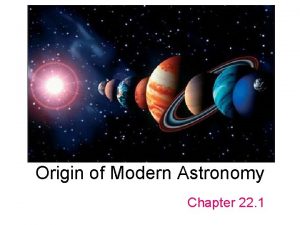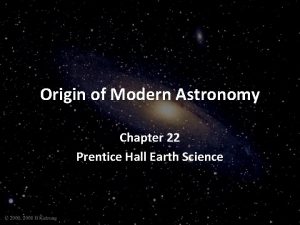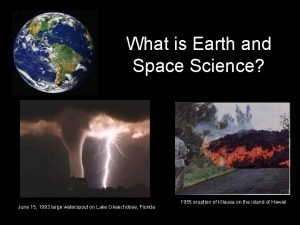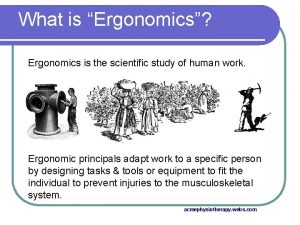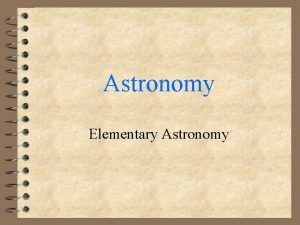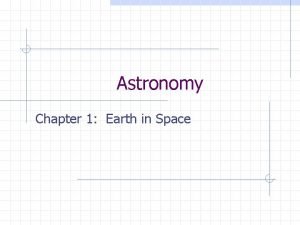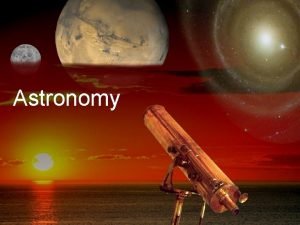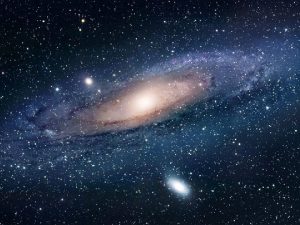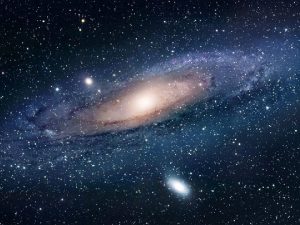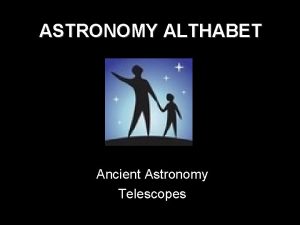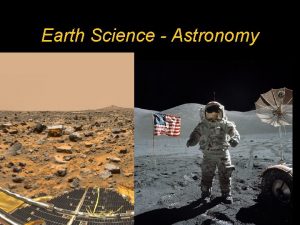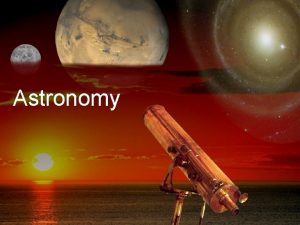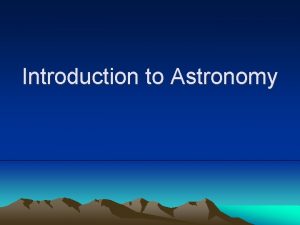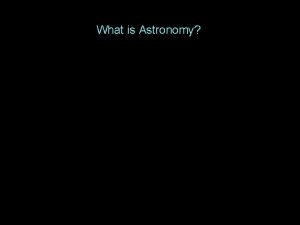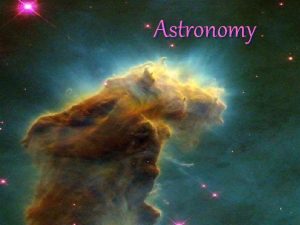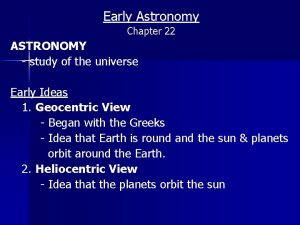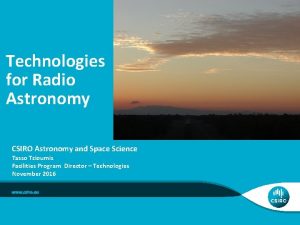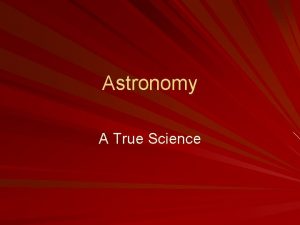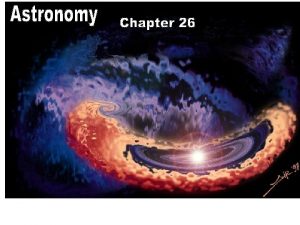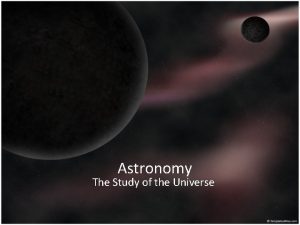Chapter 26 ASTRONOMY THE SCIENTIFIC STUDY OF SPACE



























- Slides: 27



Chapter 26 ASTRONOMY THE SCIENTIFIC STUDY OF SPACE / THE UNIVERSE.

Galactic address Planet Star The Sun Star System/Galaxy The Milky Way Galactic Group Local Group Galactic Supercluster Virgo Supercluster

GALACTIC ADDRESS

Measuring distances in the Universe • Astronomical Unit (AU) = 150 million km ( = 149, 597, 870. 66 km ) – The average distance from the EARTH to the SUN. • Light year = 9, 460, 700, 000 km ( = 9. 4607 x 1012 km ) This is based on the speed of light = 186, 000 mi/s = 300, 000 m/s - The distance that light travels in one year. • Parsec = 3. 26 light years = 19 trillion miles.

Astronomical Distances and Scales http: //htwins. net/scale 2/

Units of Distance • Astronomical Unit – The average distance from Earth to the sun ~ 150, 000, 000 meters • Light Year – The distance light travels in 1 year ~ 9, 500, 000, 000 meters

Powers of 10 •

Scientific Notation • Step 1: Find decimal point (3000 = 3000. 0) • Step 2: Move decimal point to where it is directly to right of first non-zero digit. Count the number of spaces the decimal point moves • Step 3: Write down the new number with x 10 on the end, put the number of spaces the decimal point moved at the top right corner of the x 10 (it is a positive number if point moved left and it is a negative number if point moved right)

Examples •

Looking at distant objects is like looking back in time.

Observing space • The electromagnetic spectrum represents different types of energy, each having different wavelengths, traveling at the speed of light. Link


Telescopes REFRACTING REFLECTING Optical telescope Uses lenses to bend light (refraction) Optical telescope Uses a curved mirror (reflection) to gather and focus light Problems: *Focuses different colors of light at different distances. *Ability to see distant objects is based on the size of their objective lens. Advantages: *Can be made larger, can gather more light, can see more distant/fainter objects. *Less distortion *Eliminates color differences

National Radio Astronomy Observatory (NRAO) • Green Bank, West Virginia

Robert C. Byrd Green Bank Telesco (100 meters in diameter)

Keck Telescopes – 10 m OWL (Overwhelmingly Large Telescope) – 100 m - optical and near-infrared Only Proposed!

Gran Telescopio Canarias

Human Space Exploration National Aeronautics and Space Administration (NASA)

100, 000 Stars

Supernova in Messier 82

Ant Nebula Horsehead Nebula

Comet ISON

Solar Prominence

Uranus

Jupiter’s triple solar eclipse event
 Learning astronomy by doing astronomy
Learning astronomy by doing astronomy Learning astronomy by doing astronomy answers
Learning astronomy by doing astronomy answers Learning astronomy by doing astronomy activity 1 answers
Learning astronomy by doing astronomy activity 1 answers Origin of modern astronomy chapter 22
Origin of modern astronomy chapter 22 Johannes kepler
Johannes kepler Information gathered during an experiment
Information gathered during an experiment How is a scientific law different from a scientific theory?
How is a scientific law different from a scientific theory? Definition of earth and space science
Definition of earth and space science Cartesian space trajectory planning
Cartesian space trajectory planning Space junk the space age began
Space junk the space age began Camera space to world space
Camera space to world space Cartesian space vs joint space
Cartesian space vs joint space Ndc to screen space
Ndc to screen space The scientific study of language
The scientific study of language Social psychology is the scientific study of
Social psychology is the scientific study of Herbert spencer introduction
Herbert spencer introduction Scientific study of social behavior and human groups
Scientific study of social behavior and human groups The scientific study of trees
The scientific study of trees The scientific study of behavior and mental processes
The scientific study of behavior and mental processes Finished files are the result of years of scientific study
Finished files are the result of years of scientific study What is ergonomics
What is ergonomics Mendelian genetics vocab
Mendelian genetics vocab Hình ảnh bộ gõ cơ thể búng tay
Hình ảnh bộ gõ cơ thể búng tay Slidetodoc
Slidetodoc Bổ thể
Bổ thể Tỉ lệ cơ thể trẻ em
Tỉ lệ cơ thể trẻ em Chó sói
Chó sói Tư thế worm breton là gì
Tư thế worm breton là gì



